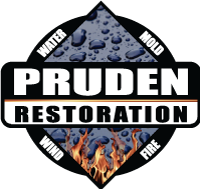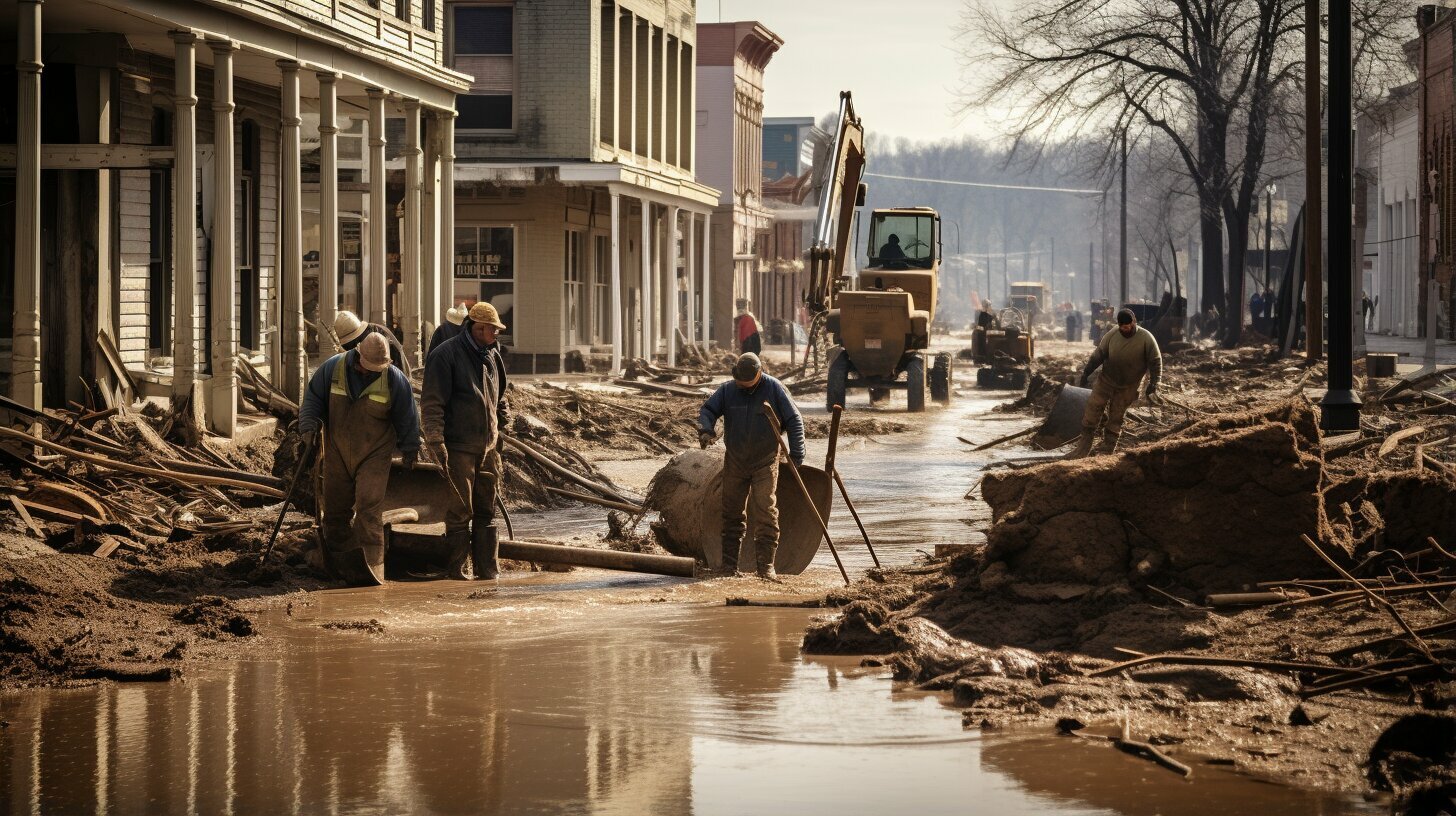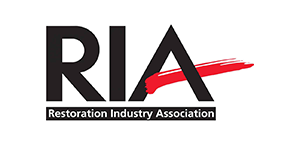As a homeowner, protecting your property from potential water damage should be a top priority. Water damage can not only cause structural damage to your home but can also lead to the growth of harmful mold and mildew. Fortunately, there are practical and cost-effective steps you can take to safeguard your home from water damage.
In this section, we will cover the top water damage prevention tips that you can implement to protect your property. By taking these proactive measures, you can avoid costly repairs and ensure the longevity and integrity of your home.
Key Takeaways:
- Regularly inspect and maintain your roof to prevent water from seeping into your home.
- Ensure proper drainage by clearing gutters and downspouts and directing water away from your foundation.
- Consider installing a sump pump in your basement to prevent flooding.
- Check and maintain your plumbing systems to prevent leaks and potential water damage.
- Properly seal windows and doors to prevent water from seeping through gaps.
Regularly Inspect and Maintain Your Roof
Your roof is the first line of defense against water damage. Regular inspections and maintenance can go a long way in preventing leaks and other forms of water damage that can wreak havoc on your home. Here are some tips to help you inspect and maintain your roof:
| Task | Frequency |
|---|---|
| Inspect for damage | Annually |
| Clean debris from gutters and downspouts | Twice a year |
| Replace damaged or missing shingles | As needed |
| Trim overhanging branches | Annually |
Inspecting your roof for damage should be done annually. Look for missing or damaged shingles, cracked flashing, or any other signs of wear and tear. If you notice any issues, address them promptly to prevent water from seeping into your home.
Cleaning debris from gutters and downspouts is essential to ensure proper drainage. Clogged gutters and downspouts can lead to water accumulation and potential water damage. You should clean your gutters and downspouts at least twice a year.
Replacing damaged or missing shingles is another critical step in maintaining your roof’s integrity. Any damage to your roof’s surface can let water seep into your home and cause extensive damage.
Finally, trimming overhanging branches is also essential to prevent damage to your roof. Overhanging branches can scrape your roof’s surface and damage shingles, potentially leading to leaks and other forms of water damage.
Regularly inspecting and maintaining your roof can help prevent water damage and save you money in the long run. Remember, prevention is always better than cure.
Ensure Proper Drainage
Proper drainage is crucial to prevent water damage. The accumulation of water can cause damage to your home’s foundation, landscaping, and basement. Make sure your gutters and downspouts are clear of debris and directing water away from your property. Regular gutter maintenance can prevent water accumulation and clogs. Consider installing gutter guards to keep leaves and debris from clogging the gutters.
Additionally, check the grading around your home to ensure water is not pooling near the foundation. If water is not flowing away from your property, it can seep into the foundation and cause structural damage. If you notice water accumulation, you may need to regrade the area surrounding your home.
Install a Sump Pump to Prevent Basement Flooding
Installing a sump pump is a crucial step in preventing basement flooding and water damage. A sump pump is a device that automatically pumps out water from your basement, keeping it dry and safe. Without a sump pump, your basement is vulnerable to flooding from heavy rain, groundwater accumulation, or even plumbing leaks.
Here’s how to install a sump pump:
- Choose the right location: The sump pump should be installed in the lowest part of your basement, usually in a pit or basin dug into the floor. Make sure the location is easily accessible and not obstructed by any other equipment or storage.
- Prepare the pit: The pit should be large enough to accommodate the sump pump and allow for proper drainage. Line the pit with gravel to facilitate drainage and prevent debris from clogging the pump.
- Install the pump: Follow the manufacturer’s instructions to install the sump pump, including connecting the discharge pipe to direct water outside your home. Make sure the pump is level and securely anchored.
- Test the pump: Test the sump pump by pouring water into the pit and observing if it activates and pumps out the water. If the pump fails to turn on or pump out water, consult a professional for further troubleshooting or repairs.
Installing a sump pump may seem like a daunting task, but it’s a relatively simple process that can save you from costly water damage repairs. Consider hiring a professional plumber or contractor if you’re not confident in your DIY skills.
Check and Maintain Plumbing Systems
Regular plumbing maintenance is crucial in preventing water damage. Leaks, faulty pipes, and dripping faucets can cause extensive water damage and pose a threat to your property’s structural integrity. Here are some tips to prevent pipe leaks and other water-related issues:
- Inspect your plumbing systems regularly for leaks, cracks, and signs of wear and tear.
- Check your water bill regularly. A sudden increase in your water bill can indicate a hidden leak.
- Have a professional plumber inspect your plumbing systems annually.
- Replace corroded or rusty pipes, valves, and fittings promptly.
- Only flush toilet paper down the toilet. Avoid flushing non-degradable items such as wipes, feminine hygiene products, and paper towels to prevent clogs.
By following these plumbing maintenance tips, you can prevent pipe leaks and avoid expensive water damage repairs.
Properly Seal Windows and Doors
Windows and doors are common entry points for water to seep into your home, causing damage to the interior and exterior structures. To prevent water leaks, it’s important to ensure that windows and doors are properly sealed. Here are some tips to help you seal your windows and doors:
- Check for gaps: Inspect your windows and doors for any gaps between the frames and the walls. These gaps can allow water to seep through, causing damage to your home. Fill any gaps with a sealant or caulking material.
- Replace weatherstripping: Over time, weatherstripping can become worn out and lose its ability to create a seal. Check your weatherstripping periodically and replace it as needed to maintain a watertight seal.
- Install drip caps: Drip caps are small plastic or metal strips installed above doors and windows. They direct water away from the frames, preventing water from pooling and seeping inside.
By properly sealing your windows and doors, you can prevent water from seeping into your home and causing damage to your property. Here’s an example of how a properly sealed window should look:
Install Water Leak Detection Devices
Water leaks can cause extensive damage to your property, and detecting them early is crucial in preventing further damage. Install water leak detection devices in your home to provide early warning signs of potential leaks or burst pipes. These devices can alert you to any water-related issues, allowing you to take immediate action and prevent extensive water damage.
| Types of Water Leak Detection Devices | Pros | Cons |
|---|---|---|
| Passive Sensors | Easy to install and operate, affordable | May not detect hidden leaks, may not provide real-time alerts |
| Active Systems | Can shut off water supply automatically, real-time alerts | Expensive, requires professional installation |
| Flow-Based Systems | Can detect small leaks, real-time alerts | Expensive, may require professional installation |
Water leak detection devices are available in different types, including passive sensors, active systems, and flow-based systems. Choose the one that suits your needs and budget.
By regularly maintaining your water leak detection devices, you can ensure their proper functioning and early leak detection. Check the batteries, testing the sensors, and verifying the alarm settings regularly can help avoid any malfunction.
By taking advantage of modern technology and installing water leak detection devices, you can be proactive in protecting your home from water damage and avoid the high costs of cleanup and repairs. Don’t let water leaks go undetected and address them promptly to prevent extensive water damage.
Maintain Proper Grading Around Your Home
Proper grading around your home is essential to prevent water pooling near the foundation, which can cause structural damage and water damage to your basement. To ensure proper grading, make sure the ground slopes away from your home’s foundation. A good rule of thumb is to have a slope of at least 1 inch for every foot of distance from the foundation.
If you notice water pooling near your home, it may be necessary to regrade the area. This can involve adding soil to build up the grade or repositioning downspouts to direct water away from the foundation.
It’s also important to ensure that any landscaping features, such as flower beds or retaining walls, do not impede water flow away from the foundation.
| Benefits of Proper Grading | Risks of Improper Grading |
|---|---|
| Prevents water pooling near foundation | Structural damage to foundation |
| Protects basement from water damage | Basement flooding |
| Helps maintain soil stability | Damage to landscaping features |
| Reduces potential for mold growth | Increased risk of pest infestation |
Proper grading is an essential measure for foundation protection and water damage prevention. By ensuring that the area around your home slopes away from the foundation, you can minimize the risk of water damage and maintain the integrity of your property.
Keep Your Basement Dry with Waterproofing
If you live in an area prone to heavy rainfall or flooding, then basement waterproofing can go a long way in preventing water damage in your home. Waterproofing is the process of applying a sealant or membrane to your basement walls and floors to prevent water from seeping through.
Waterproofing your basement can involve various methods, including:
| Method | Description |
|---|---|
| Interior Sealants | Applying a sealant to the interior walls and floors of your basement to prevent water seepage. |
| Exterior Waterproofing | Excavating the soil around your foundation and applying a waterproof membrane to the exterior walls. |
| Drainage Systems | Installing a drainage system, such as a sump pump, to remove any water that manages to seep through the walls or floors. |
One of the most effective methods is to apply an interior sealant. This type of basement waterproofing involves applying a liquid coating to the walls and floors of your basement. The sealant fills any cracks or gaps and creates a protective barrier against water seepage.
Another important aspect of basement waterproofing is to ensure proper ventilation. Proper ventilation can help minimize humidity and moisture levels in your basement, which can lead to mold growth and other issues. Consider installing a dehumidifier or exhaust fans to improve air circulation.
In conclusion, waterproofing your basement can help prevent basement flooding and water damage. Choose the method that best suits your needs and budget, and don’t hesitate to seek professional help if needed. By taking this precautionary measure, you can protect your home and ensure its longevity.
Be Mindful of Appliance Maintenance
Regular maintenance of appliances such as washing machines and dishwashers can go a long way in preventing water damage in your home. Inspect these appliances regularly for leaks, faulty hoses, or any other signs of wear and tear that could result in water damage.
For washing machines, ensure that the hoses are properly connected and not worn out. Replace them as necessary to prevent water leaks. Additionally, avoid overloading the washing machine, as this can cause it to malfunction and result in water damage.
For dishwashers, check the door seal for any signs of damage or wear. A damaged seal can cause water to leak out during operation, potentially damaging your floors or cabinets. Additionally, ensure that the dishwasher is level to prevent any water from pooling and causing damage.
| Appliance | Maintenance Tips |
|---|---|
| Washing Machine |
|
| Dishwasher |
|
By maintaining your appliances and addressing any issues promptly, you can prevent water damage in your home and avoid costly repairs. Remember to prioritize regular maintenance to ensure the longevity and proper functioning of your appliances.
Conclusion
In conclusion, as a homeowner, it’s crucial to take proactive steps to prevent water damage in your home. Regularly inspect and maintain your roof, gutters, and downspouts, and ensure proper drainage by grading the ground away from your foundation. Install a sump pump in your basement and consider waterproofing to prevent basement flooding. Check and maintain your plumbing systems and appliances, and seal windows and doors to prevent water leaks. Finally, install water leak detection devices for early warning signs of potential leaks.
By implementing these practical and cost-effective measures, you can protect your property from water damage, avoid costly repairs, and ensure the longevity and integrity of your home. Remember, prevention is always better than cure, so take action today to safeguard your home from potential water damage.
FAQ
What are the top water damage prevention tips for homeowners?
The top water damage prevention tips for homeowners are regularly inspecting and maintaining your roof, ensuring proper drainage, installing a sump pump, checking and maintaining plumbing systems, properly sealing windows and doors, installing water leak detection devices, maintaining proper grading around your home, keeping your basement dry with waterproofing, being mindful of appliance maintenance, and implementing these tips can go a long way in safeguarding your home from water damage.
Why is it important to regularly inspect and maintain your roof?
Regularly inspecting and maintaining your roof is important because it allows you to identify any signs of wear and tear, damaged shingles, or potential leak points. By addressing these issues promptly, you can prevent water from seeping into your home and causing damage.
How can I ensure proper drainage to prevent water damage?
To ensure proper drainage and prevent water damage, make sure your gutters and downspouts are clear of debris and are directing water away from your foundation. Installing gutter guards can also help prevent clogs and ensure water flows freely.
Why should I consider installing a sump pump?
Installing a sump pump in your basement can help prevent flooding in case of heavy rain or groundwater accumulation. The sump pump will automatically pump out water, keeping your basement dry and minimizing the risk of water damage.
Why is it important to check and maintain plumbing systems?
Regularly checking and maintaining your plumbing systems is important because it allows you to identify and repair any leaks, dripping faucets, or signs of water damage. By addressing these issues promptly, you can prevent water from causing extensive damage and potential mold growth.
How can I properly seal windows and doors to prevent water leaks?
To properly seal windows and doors and prevent water leaks, ensure that they are properly sealed. Replace worn-out weatherstripping, sealant, or caulking as necessary to maintain a watertight seal.
Why should I install water leak detection devices?
Installing water leak detection devices can provide early warning signs of potential leaks or burst pipes. These devices can alert you to any water-related issues, allowing you to take immediate action and prevent extensive water damage.
What is proper grading and why is it important?
Proper grading refers to ensuring that the ground around your home is properly sloped away from the foundation. This prevents water from pooling near your home’s base and potentially seeping into the foundation, causing structural damage.
How can I keep my basement dry with waterproofing?
To keep your basement dry with waterproofing, you can consider applying sealants, installing a drainage system, or adding a waterproofing membrane to the walls and floors of your basement. These measures help prevent water seepage and flooding.
Why is appliance maintenance important for preventing water damage?
Regularly inspecting and maintaining your appliances, such as washing machines and dishwashers, is important for preventing water damage. Check for leaks, faulty hoses, or signs of wear and tear and address these issues promptly to avoid costly water damage repairs.










